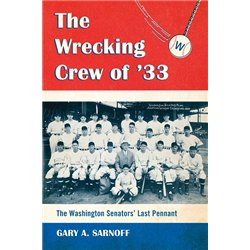Where was Moe Berg?
His where-a-bouts where unknown.
Was he okay?
All catchers, along with all pitchers and rookies, were required by rookie manager Joe Cronin to report to spring training in Biloxi, Mississippi, before the rest of the squad. All complied with the rookie manager’s wishes. All accept for Berg. The last word about the scholarly athlete was that he was heading to Japan after the conclusion of the 1932 season to teach the natives about the game of baseball.
Two years later, Berg would return to Japan as a member of the American League All-Star team. That team, which featured a roster with Babe Ruth, Lou Gehrig, and Jimmie Foxx, traveled to the Land of The Rising Sun to play a series against the best the Japanese could offer – which was a team of college All-Stars. Connie Mack, the manager of that team of American League legends, added Berg to the roster as a backup catcher, and as a chaperon since he spoke the language. Unbeknown to Mack and his All-Star teammates, Berg carried out a mission during the series for the United States Government.
During one of the games, Berg sneaked away from the stadium. In the disguise of a civilian, he went to a Tokyo hospital to visit an American Ambassador’s daughter, who was a patient. After speaking fluent Japanese to bypass the front desk, Berg went unnoticed when heading directly to the building’s roof. Once there, he took out his movie camera to film the Tokyo harbor. In 1942, when the American Military plotted their attack to bomb Tokyo in retaliation for Pearl Harbor, Berg’s film was referenced but never used. The feeling was his eight-year-old film was outdated since the Harbor’s surroundings had changed.
One morning the front desk clerk at the Hotel Biloxi informed Cronin that a message had been received from Moe Berg’s father. Berg had finally arrived in New York City after enduring a few traveling problems, and he was heading to Biloxi. When he finally arrived, his teammates drilled him with questions about baseball and the culture in Japan. One evening the entire team gathered in the hotel lobby to listen to Berg’s stories:
Baseball has become the national past time of Japan. Forty-five thousand kids are playing the game. They play day and night – at night under the street lamps or Tokyo, or in front of brightly lighted store windows. There are countless of sandlot teams and many nines sponsored by the business men of the nation.
The Big Leagues in Japan are strangely enough, amateur. College baseball is paramount. Think of it; 40,000, 50,000, 60,000, even 70,000 people at college ballgames. The chief league functions in and about Tokyo, is composed of representative teams of the six colleges of the city. Their talent is equivalent to our class A Baseball.”
in Japan if the pitcher beans the batter, the bruised batter bows deeply to the pitcher, and in return the pitcher bows to the batter.
The Japanese players are poor hitters but great defensive players and quick throwers, and particularly like to hear the applause of the crowds.
Berg spoke about the culture, and mentioned how they eat with chopsticks. “Just think – chopsticks,” one rookie said to another. His teammates requested a personal demonstration. One player steeped outside, then returned to the lobby with two sticks and handed them to Berg. When Berg was unable to pick up an object when using the sticks like chopsticks, his teammates busted out laughing.
Gary is the author of The Wrecking Crew of ’33; The Washington Senators’ Last Pennant.






